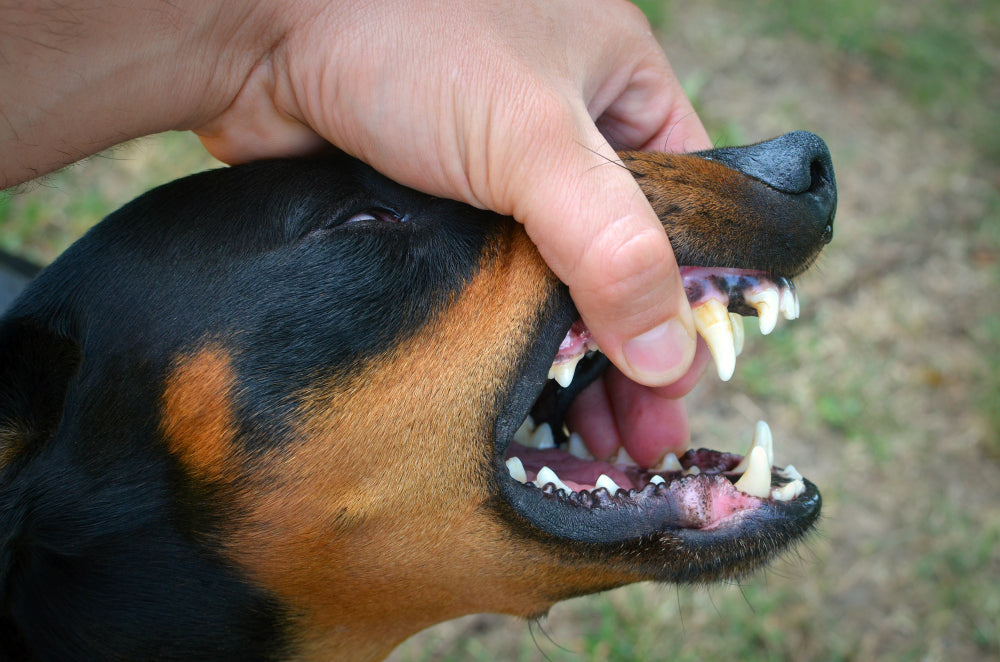
The Importance of Dental Cleaning in Dogs: Steps to Follow
|
|
Time to read 3 min
|
|
Time to read 3 min
Today we're going to delve into an essential topic for the health of our furry companions: dental hygiene in dogs. Although it's often overlooked, maintaining proper oral hygiene in our dogs not only guarantees a bright smile, but is also crucial for their overall health.
Table of Contents
Dental cleaning for dogs is vital for several reasons. Just like in humans, plaque and tartar buildup can lead to periodontal disease , which affects around 80% of dogs by the age of three. These conditions not only cause bad breath, but can also lead to pain, infections, tooth loss, and can affect vital organs such as the heart and kidneys due to bacteria entering the bloodstream.
Before we dive into how to keep your dog’s teeth clean, it’s crucial to know how to recognize the signs of dental problems. Some key indicators include:
Bad breath or halitosis in dogs is not simply an inconvenience, it is an early sign that something is not right in their mouth. It is often one of the first indicators of periodontal disease caused by the buildup of bacteria and dental plaque. If your dog's bad breath is constant and particularly bad, it is important to have a dental check-up to determine the underlying cause and treat it before it progresses.
A dog that suddenly shows disinterest in his food or has difficulty eating may be experiencing dental or gum pain . This can be due to damaged teeth, swollen gums, or the presence of foreign objects in the mouth. Watching for changes in your dog's eating habits is crucial, as they can indicate serious problems that require immediate attention.
Excessive saliva production, often accompanied by blood, is a sign of irritation or infection in the dog's mouth . It can be indicative of advanced periodontal disease, local infections, or the presence of foreign bodies such as splinters or bones stuck between the teeth or under the gum line.
Tooth mobility or loss is common in dogs with advanced periodontal disease. This occurs when the tooth's supporting structure is weakened due to prolonged infection and inflammation. Loose teeth are not only painful, but they also make eating difficult and can affect a dog's nutrition.
Gums that are red, swollen, or bleed easily are signs of gingivitis , an early stage of periodontal disease. Inflammation is the body's response to the buildup of plaque and irritating bacteria. If left untreated, gingivitis can progress to more severe periodontal disease, affecting the teeth and jawbone.
Plaque is a sticky film composed primarily of bacteria that forms on teeth and along the gum line. If left unremoved, it mineralizes and turns into tartar, a hard, yellowish substance that is much harder to remove and harbors even more bacteria. The visible presence of tartar is not only a sign that a professional dental cleaning is needed, but also a reminder of the need to improve regular dental hygiene at home to prevent future buildup.
If you notice any of these symptoms in your dog, it is essential to consult a veterinarian for a detailed examination.
Tooth brushing is one of the most effective ways to clean your dog's teeth. Ideally, you should brush your dog's teeth daily to prevent plaque buildup. Use a toothbrush specifically designed for dogs and toothpaste formulated for pets , as human toothpaste can be toxic to them.
There are a number of toys and treats designed to help keep dogs' teeth clean through chewing . These products not only satisfy a dog's natural chewing instinct, but they also help clean plaque naturally. Make sure to select options that are safe and appropriate for your pet's size.
An essential strategy for maintaining your dog's dental health is to choose the right type of kibble based on your pet's size. Kibble should be the right size for your dog to chew effectively , as the act of chewing helps reduce tartar buildup. The action of chewing hard kibble helps clean the surface of the teeth, removing plaque before it hardens and turns into tartar.
That is why at Breedna we offer several options of dog food such as: food for adult dogs , food for adult dogs of small breeds or food for puppies of small breeds .
Consult your veterinarian about the best dental food options for your dog.

